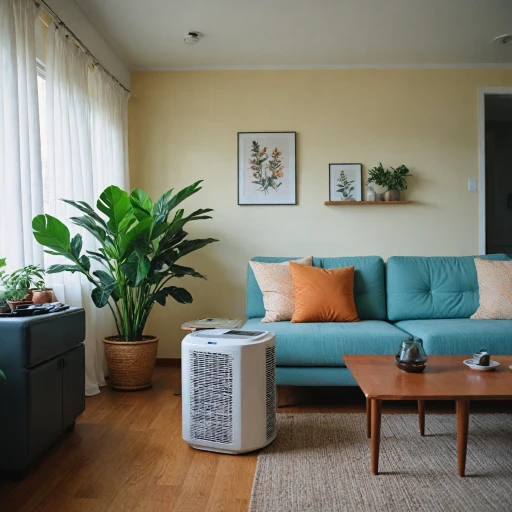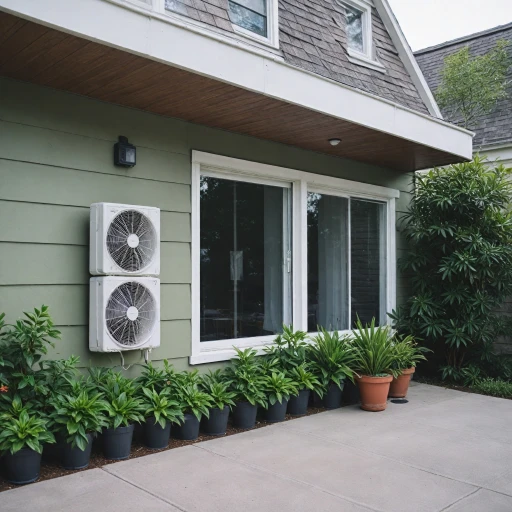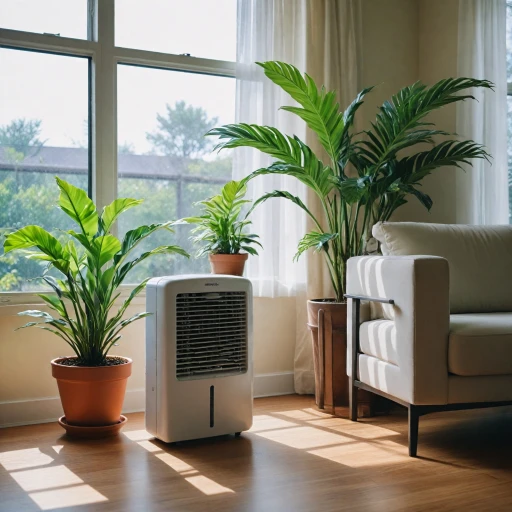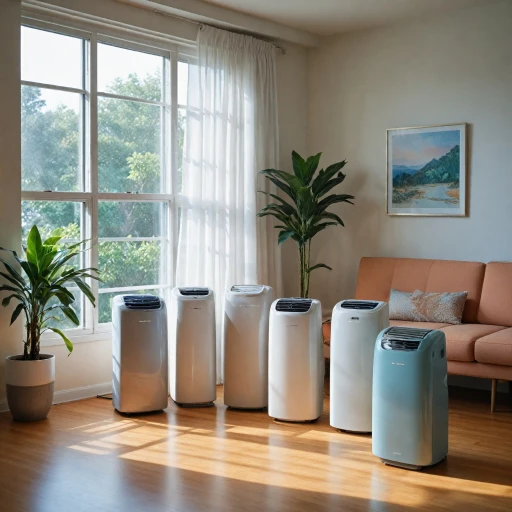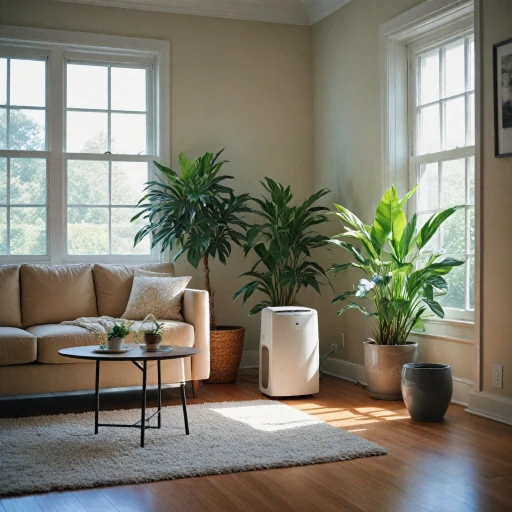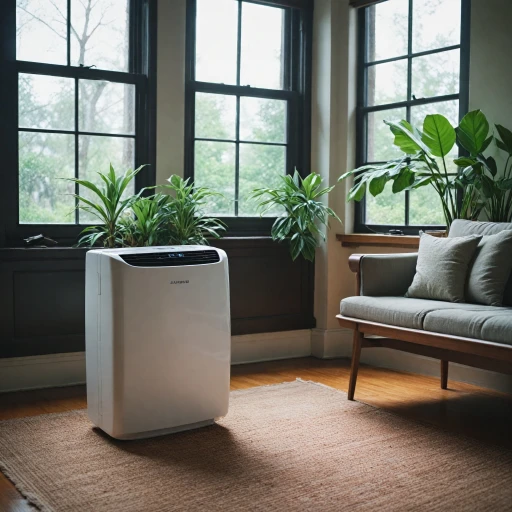
What is an AC Mini Split System?
Identifying the Functionality of Ductless Air Conditioning
A ductless or mini split air conditioning system is a versatile solution that provides targeted cooling without the need for extensive ductwork. Unlike traditional air conditioners, these systems are composed of an indoor unit and an outdoor unit connected by refrigerant tubing and electrical cables. This design allows for flexibility in installation, enabling users to cool isolated areas or multiple zones independently, without the extensive and invasive installation process typical of central units.
The mini split system is renowned for its quiet operation, outstanding energy efficiency, and the ability to control temperatures in specific areas or zones of your home. This not only makes it a customizable option for homeowners seeking improved climate control but also contributes significantly to potential energy savings, as you can cool occupied spaces only. This is particularly advantageous when compared to conventional systems that might use more energy cooling unoccupied areas.
Typically, the indoor unit is mounted high on a wall, while the outdoor unit is strategically placed outside the building, often on a solid, level base. This separation not only enhances cooling efficiency but also reduces indoor noise, ensuring a peaceful indoor atmosphere. Most ductless mini split systems come with a heat pump, adding the benefit of year-round use, as they can also provide heat during colder months.
Understanding the structure and benefits of a ductless mini split system is the first step towards making a more informed and economical choice for your cooling needs. As we dive deeper, we'll explore how these units outperform other options, like portable air conditioners, in various aspects, from energy efficiency to maintenance.
Energy Efficiency and Cost Savings
Maximizing Comfort While Minimizing Costs
When considering an AC mini split system, energy efficiency stands out as a paramount advantage. The ductless mini split systems are renowned for their energy-saving capabilities, primarily due to their innovative design and engineering. Unlike traditional air conditioning units that can lose a significant amount of energy through the ductwork, ductless systems eliminate this energy loss completely, making them a preferred choice for energy-conscious homeowners. One of the key elements contributing to their efficiency is the SEER rating, which stands for Seasonal Energy Efficiency Ratio. A higher SEER rating indicates a more energy-efficient system, resulting in reduced utility bills and long-term savings. Additionally, many mini split systems are equipped with heat pumps, providing both heating and cooling capabilities from one unit, further optimizing cost efficiency. Zoning abilities play another crucial role in energy savings. With ductless systems, you can create multiple zones, allowing you to cool or heat individual rooms separately. This targeted climate control ensures energy is not wasted on unoccupied spaces, enhancing overall efficiency. The initial investment in a mini split may appear higher than a portable air conditioner, but the reduction in energy bills and potential eligibility for free shipping on qualified products often compensates for the upfront cost. When purchasing, be sure to check for any additional shipping policy details or area surcharges that may apply to remote areas or semi truck deliveries. To learn more about alternatives to mini splits, visit understanding portable evaporative coolers. This comprehensive guide provides insights into another energy-efficient cooling option that could suit your specific needs.Installation Process and Considerations
Seamless Setup for Your Comfort
Installing an AC mini split system is notably straightforward compared to traditional air conditioning units. However, despite the ease, there are certain considerations to keep in mind to ensure optimal performance and efficiency. Here's a closer look at the process:
- Identify Installation Zones: Mini split systems are usually ductless and designed to cool specific zones. Determine the rooms or areas in your home that require cooling or heating. This step is crucial as mini splits are zone-specific systems.
- Indoor and Outdoor Units: The system consists of an indoor handling unit and an outdoor component, requiring proper placement. The indoor unit typically mounts high on a wall, freeing up floor space. Remember that the outdoor unit needs a stable surface, such as a concrete pad, and should be accessible but not intrusive to your landscape.
- Refrigerant Line and Electrical Connections: Connecting the indoor and outdoor units involves running refrigerant lines, which must be properly sealed and insulated to ensure efficiency. The setup also includes electrical wiring, best handled by a professional to adhere to safety standards and specifications.
- Installing the Heat Pump: Mini split systems often incorporate a heat pump, boosting both heating and cooling capabilities. Ensure that your chosen unit matches the BTU SEER ratings appropriate for the size of your designated cooling zones.
- Lifting and Handling: Given the weight, sometimes up to several hundred lbs, it's advisable to utilize lift gate services during shipping and curbside delivery. This ensures safety during transit and installation. Products usually qualify for free shipping when delivered by ground curbside, but confirm the shipping policy for details, especially for remote areas where surcharges may apply.
- Professional Installation: Although the process might seem DIY-friendly, hiring a certified technician is recommended. They will ensure all components, like the heat pump and ducts, are correctly integrated—offering a seamless experience with less room for error.
This guidance helps ensure your AC mini split is installed correctly, maximizing its efficiency and lifespan. For more information on choosing the right system for your needs, explore various factors that impact your choice.
Comparing AC Mini Splits and Portable Air Conditioners
Understanding the Differences: AC Mini Splits vs. Portable Air Conditioners
When it comes to cooling solutions, both AC mini split systems and portable air conditioners offer distinct advantages and limitations that cater to different needs. Delving into these aspects can help you make a well-informed decision.Maintenance and Longevity
Proper Care for Long-lasting Service
Regular maintenance is essential for ensuring the longevity and efficient operation of your AC mini split system. By keeping your unit in optimal condition, you can maximize its performance and ensure energy savings in the long run.- Regular Cleaning: Keeping the filters clean is crucial for maintaining good air quality and ensuring that your system operates efficiently. Depending on the manufacturer's instructions, clean or replace filters every few months.
- Inspect Outdoor Units: The outdoor component of your split system, often housing the condenser and heat pump, should be kept free of debris, foliage, and dirt. This prevents obstructions and allows the system to run smoothly.
- Annual Professional Checkups: While regular DIY checks are beneficial, a professional technician should inspect the ductless mini split annually. This checkup might include verifying the BTU and SEER ratings, checking for refrigerant leaks, and ensuring all zones are functioning as intended.
- Special Considerations for Units in Remote Areas: If your unit is located in a remote area, consider ground curbside delivery for maintenance to avoid excess shipping costs. Some units might require special shipping policies due to items lbs or area surcharges.
- Documentation and Warranties: Keep documentation of your system's installation and any maintenance performed. Be aware of the warranty specifics should repairs be necessary.
Choosing the Right System for Your Home
Factors to Consider When Selecting Your Cooling Solution
Choosing the right air conditioning system for your home involves a careful evaluation of several factors. Whether you're leaning towards a mini split system or considering a portable air conditioner, it's essential to weigh the benefits and limitations of each option.
Understanding Your Space and Needs
First, assess the area you need to cool. Mini split systems are ideal for homes with multiple zones, offering flexibility and efficiency. They are ductless, making them a great choice for homes without existing ductwork. Consider the BTU rating required for your space, as this will determine the system's cooling capacity. A higher BTU rating is suitable for larger areas.
Energy Efficiency and Cost Implications
Energy efficiency is a crucial factor. Mini splits often boast higher SEER ratings, indicating better energy performance. This can lead to significant cost savings over time. Additionally, consider if a heat pump feature is necessary for your climate, as it can provide both heating and cooling.
Installation and Maintenance Considerations
Installation complexity varies between systems. Mini splits require professional installation, which can involve additional costs. However, they offer a more permanent solution compared to portable units. Maintenance is generally straightforward for both systems, but mini splits may require periodic servicing to ensure optimal performance.
Budget and Shipping Details
Budget is always a consideration. While mini splits may have a higher upfront cost, they often qualify for free shipping and have fewer ongoing expenses due to their efficiency. Be aware of any shipping policy details, such as curbside delivery or potential area surcharges for remote locations. Some items may require a lift gate for delivery, especially if they are over a certain lbs threshold.
Final Thoughts
Ultimately, the choice between a mini split and a portable air conditioner depends on your specific needs, budget, and home layout. Consider all factors, including energy efficiency, installation, and long-term costs, to make an informed decision that best suits your lifestyle and comfort requirements.


